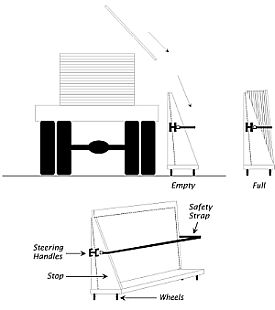Question
I have had requests to produce drawer boxes for other local cabinet shops who want to outsource their work. I'm not sure how to go about choosing the joint for the box. I have been using the butt joint for years with no problems with the joint failing. I know others who use the dovetail joint and swear by it, and yet others who use different dado joints and claim those are the strongest due to the most gluing surface. I should make the joint or box the way the customer wants, but I don't have the equipment or the room to place them if I have to make all the different joints.
Everybody claims that they use the strongest joint on the market. But why do they need such a strong joint, with the guides on the market today? One does not need to jam or force the drawer into its opening - a slight push of one finger does the trick. Does it all boil down to an individual preference?
Forum Responses
(Cabinetmaking Forum)
Dovetails, dovetails, dovetails. If you want to make one kind, it's all you need. That said, how can you be an outsource for local shops if you aren't set up for multiple joinery options? The dovetail is by far the strongest, even with hardly any glue. It's always been a benchmark of quality and if you are set up for it, you'll do well.
I square cut 1/2'' Baltic birch staple and glue. If these guys are willing to farm out drawers to you, haven't they seen the drawers that you normally produce? If I were going to have someone else build my drawers, they would have to be dovetailed, because if they were square butt, I could build them faster than I could fax the order over and write a check to pay for them.
Dovetails are nice looking, but I've repaired many of those in antique dressers, too. If they'll pay, go for it. I like them the best, too. Just can't afford them most of the time. If not, but you still want to impress them, try using the drawer-loc bit - it's very fast and strong. Once set up, it's as fast as a rabbet joint.
Then there are the companies that want melamine drawers over MDF drawers, figuring that they will save a few dollars with a clean looking, white melamine finish that gets all marked up by just looking at it.
It would seem that if you are going to offer a quality drawer for outsourcing, you are going to have to limit the design and materials to your preferred standard that you can easily handle and make a few dollars on. The big point (for me) is the final finish on the product. The sanded, sealed, cleared bottom rails are what I look for, and the ability to increase the bottom thickness on some of the larger drawers.
The good quality (all wood) drawers that I receive from companies cost me $15.U.S. for a 12"w.x 18"d. x 4"h. drawer, sanded, sealed and clear coated with a few dabs of silicone along the bottom, along the dado. With the pricing of about $35.00 for 30"w. x 18"d. x 6" h. drawer, the profit margin seems to be very slim and competitive.
My mainstay is making raised panel doors for most of these shops, with a growing interest. I thought that a simple, quality built drawer box might fill in the void that sometimes appears between jobs. I know that one thing will not happen and that is making dovetails. I cannot see myself giving up enough room or shelling out that kind of capital for a machine that would save the time needed in a one man shop. Not too mention that I do not think dovetails would go over very well. The ones who have used doves use them only because when they order their drawers from other mega companies, that's the only way they offer them.
I guess the best answer that I could have hoped for was from the second response:
"See what the market will bear. Yes, dovetails are the strongest and most appealing, but will the guys pay for them? How many tearouts have you done where the drawers were butt joints, glue, and staples? And they are still strong when you throw them away? Find out what they want and what they are willing to pay for. If you can work less and make more money, go for it. Feed your bank account, not your ego."
I just finished refacing a job from the 70's, with drawers I had to beat apart (and broke most of them in the process) trying to remove the front. All of these were butt and stapled jointed.
You can actually make good time on high quality manual jigs (I use the Leigh) once you become proficient in the use of one particular jig. While you'll never beat the efficiency of a multi spindle machine by doing one at a time, it's really not that bad. The time is primarily taken up by machining the solid stock (Baltic birch ply is also popular around here, which is quick) and finishing.
While you may not be able to make a living doing it this way as your only business, that extra chunk of money can come in handy. I have shops that order six at a time, and others that order six dozen. I'll keep it up for the foreseeable future.
I've found that some shops will only use dovetailed solid maple and don't even confuse their customers with other choices, while one of the large architectural cabinet and millwork shops nearby has ordered piles of Baltic birch dovetailed drawers for commercial projects. Give it a try.
